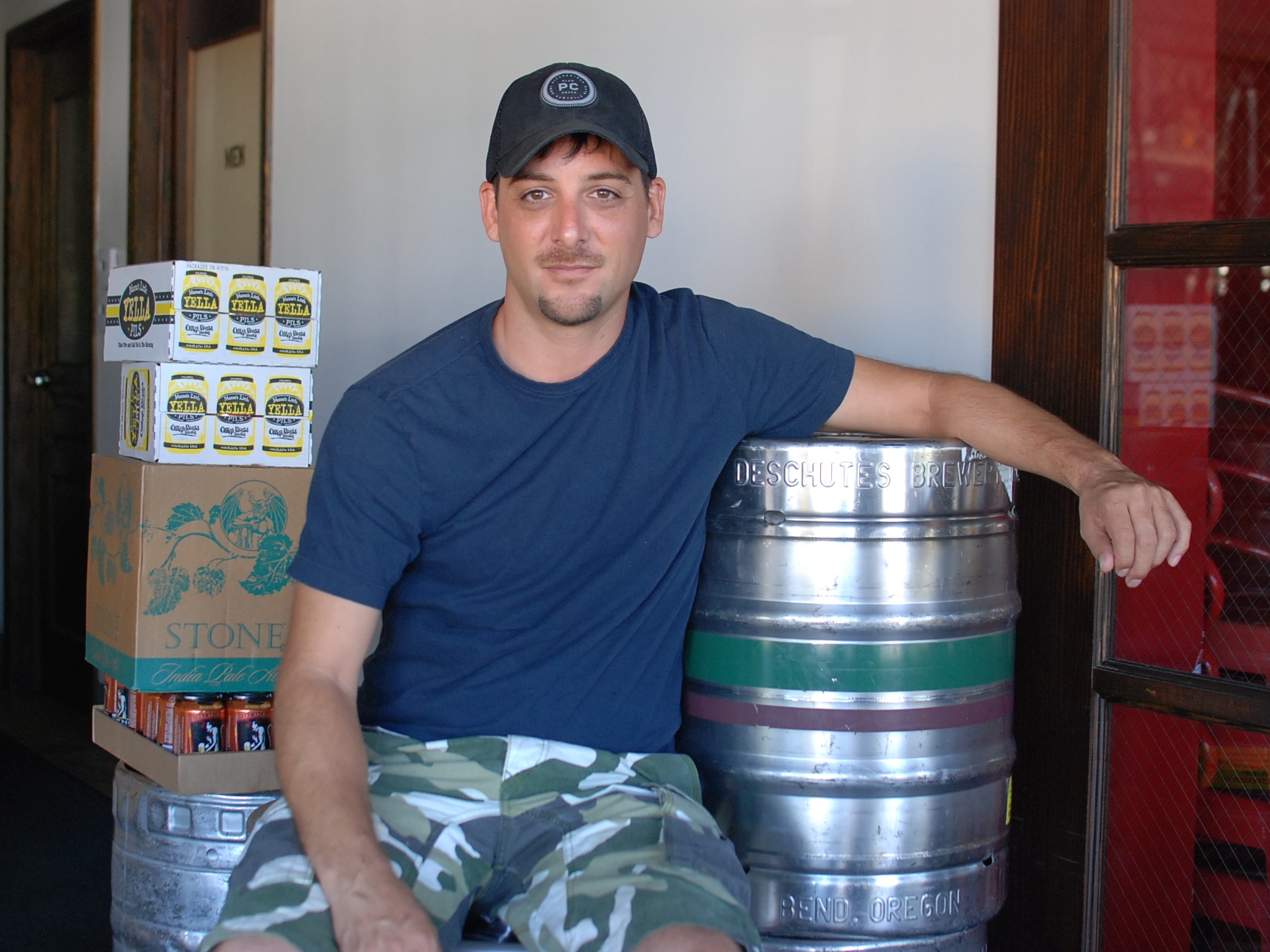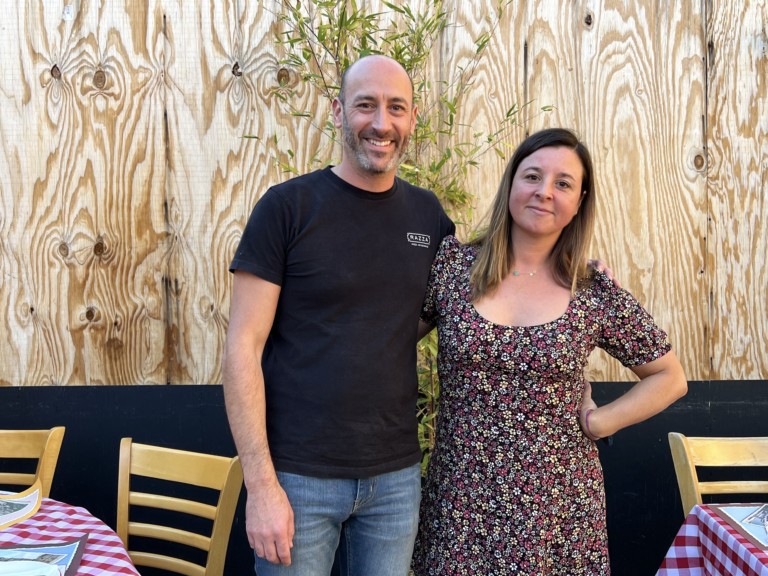INTERVIEW CONTINUED FROM PREVIOUS PAGE
JL: What does a dish have to be for it to go on your menu at Plan Check?
EU: First and foremost, it has to be delicious. It has to be crave-able. To get onto the menu is really tough here, we have a really small, concise menu. That’s by design so we can scale this concept. With that said, we have multiple specials daily. So that’s my way to attract chef talent here. Because you’re giving them an opportunity to create on a daily basis. So, you’re not necessarily going to get something put on the menu, but you’re definitely going to have something on the specials board at that location, and if it’s a good special, it’ll be on constant rotation. We rotate maybe about 20 specials here. Some of them are here five out of seven days, like the truffle burger, or the veggie burger is here almost every single day.
JL: In what case is a dish a good fit in Little Osaka, but maybe not in Fairfax or downtown? How do you decide what unique dishes appear at each location?
EU: From location to location there are slight tweaks on the menu. You know, for instance we have a tuna dish here that more exemplifies the neighborhood here which is really Japanese heavy. On Fairfax, which is an old school Jewish neighborhood, we changed that fish dish into salmon pastrami. I just kind of take a look at the neighborhood, and I decide what feels right to make a tweak on the menu, and where. I really do it with my instinct on decisions like that, I mean I’m sure we can break down analytics and and demographics, but ultimately I make these decisions based off my experiences and my gut feeling on just how I’ve done things in the past, and it’s kind of in my brain already and it just tells me to do certain things.
JL: What’s the most recent dish you developed, and what was your inspiration and approach?
EU: I’ve been working on two things. Both have yet to make it to the specials board. I’m still tweaking around. I’ll probably launch them at some of these events during the summer. One I’m working on new leathers. I just made Bloody Mary leather that’s delicious, and I stuff it with blue crab salad, some pickled asparagus. As you eat it, you start chewing on it, you really get the flavor of a Bloody Mary, it feels like you’re almost drinking or eating a Bloody Mary. You get the seafood elements, and you get the pickle elements, so I’m really interested in leathers right now. I started messing around with lamb belly baos, so I’m working on baos with lamb instead of pork, and just having fun with them, steaming them and then roasting them and then glazing them, so I’m just trying to take those familiar comforting foods and go next level, next level, next level, without being too gimmicky. So I’m just trying to have fun with all these new items and these new dishes and a familiar flavor, but in a new format.
JL: What are some keys to a great hamburger?
EU: First and foremost, you’ve got to use fresh beef. At least 20% fat ratio. Fat is flavor, as many chefs always say. You have to season it correctly. You don’t want to skimp on the seasoning. You’ve got to have a good bun, you’ve got to have a balance of toppings. And you’ve got to pay attention to what you’re building. You’ve got to brown the meat correctly, make sure you’re not cooking it all on one side, have a nice even doneness of the burger. That’s really it, just take care and pay attention to every single aspect. You don’t have to be too fussy, but you’ve got to be aware of what you’re doing. And if something doesn’t feel right, you got to listen to that little voice in your head that tells you it’s not right. If the meat doesn’t look quite right, or if it’s a little brown, you know your onions aren’t quite caramelized enough, go ahead and listen to that little voice that tells you to cook it a little further or take it that extra step and make sure you’re doing things correctly. Toast that bun in butter if you have to add that extra flavor. Make sure your bun is soft, and fresh, and warm all the way through. Make sure that cheese is melted on the burger.
JL: You make leathers, chlorophyll mayo, kumquat gastrique, what’s wrong with ketchup and mustard?
EU: [laughs] Nothing at all. I love ketchup and mustard. I always have those options available for our guests. You know, as a restaurant you’re here to service people’s needs, and actually you’re here to serve their most primal needs, and that’s the food. It’s hard for me to tell people no. I can only show them how I’d like them to eat, but it’s up to them if they want to do that. If you want ketchup and mustard only, that’s fine. We’re going to accommodate that and we’re not going to judge you on it. We’ve all been there, you know, we’ve all kind of gone through that process. As a kid, you only want to have a very simple burger, and you progress. Some people don’t progress and there’s nothing against that, that’s just how they like it. So nothing wrong with ketchup and mustard.
JL: Who else in the restaurant industry do you look to for inspiration, guidance or advice?
EU: You know, it’s really interesting because we’re now in a day and age where there’s so much information out there. You can be impacted by many chefs, and many different kind of industries, and cultures, without ever knowing that they’ve influenced you or inspired you. That’s what’s great about now a days. Like I said, I had a mentor in the past, Frank Fronda, but when I’m looking for advice now, it’s as easy as a Google click, or I can reach out to somebody, a culinary instructor I haven’t talked to in 15 years, and ask a simple question over e-mail. There are so many avenues to get the answers you’re looking for, so it’s really kind of open. I almost go down the rabbit hole of the Internet, you know, when it comes to gathering information and advice.
JL: What will it take for you to consider you work with Plan Check a success?
EU: I consider ourselves successful. I do. You know, we’re on pace to open one or two restaurants a year right now, which is exactly what I wanted. I wanted to grow this branch, I wanted to create a restaurant that has mass appeal but where I can still create and still have the chef side of things happening. Doing it for the masses. I think that’s a success for me, and I think we’ve been successful. We’ve been busy, been able to get some attention, which is great too. So I would consider ourselves a success. Not only that, but we’re successful with our bottom line.
JL: What do you want to be known for as a chef?
EU: When you think about legacy, it’s kind of tough to put yourself in that position sometimes. I just want to be known as a good chef, a guy who is a local guy, who’s doing well, who went into a section of cooking from a comfort food angle, and modernized it.









Leave a Comment